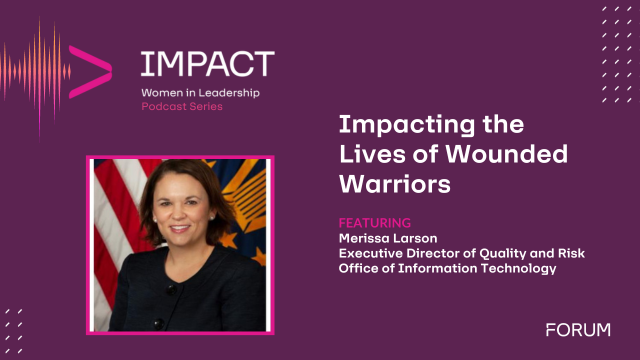By Cliff Freeman
“I’m a doctor, not a computer!” Trekkies (or Trekkers if you prefer) will recognize this quote from Dr. “Bones” McCoy’s future replacement, the Emergency Medical Hologram (EMH) who provided clinical care onboard the Star Trek Ship Voyager. I suspect the EMH was voicing frustration that his programming still required him to interact with a computer to retrieve patient data and information to properly treat patients.
Unmet EHR Potential
Many clinicians share this frustration, but for different reasons. They recognize the potential of the electronic health record (EHR) to improve health care and patient safety and to reduce health care costs, but are frustrated because the functionality of EHRs has not yet reached its promising potential to transform how they provide health care. Despite their frustration, physicians have not given up on the EHR. In fact, a 2014 study by Friedberg, et al. found that less than 20 percent of physicians who routinely used the EHR wanted to return to using a paper health record. Another study done in 2013 by the Rand Corporation “found that physicians overwhelmingly approve of the concept of EHRs, primarily for their potential to improve data access and care.” These doctors believe that fully functioning EHRs can provide, 1) Physician access to the health data from any location, 2) Reduction of repeat patient testing caused by lack of access to test results, 3) Improved patient safety because all medical data is available to the clinician for treatment including the master problem list, drug allergies, and current medications, and 4) More efficient care coordination and transition of patient care between healthcare providers.
So what are some of the EHR deficiencies that frustrate physicians? In my experience, two of the biggest physician EHR deficiencies are little or no EHR interoperability and lack of EHR usability to support clinical workflow. David Lee Scher, M.D., in his article, “What Doctors Really Want –and Aren’t Getting – From EHRs,” states, “What we really need and want in our EHRs is interoperability.”
In January 2015, a group of 35 physician organizations led by the American Medical Association wrote a letter to the National Coordinator expressing their dissatisfaction with EHR performance. Included in the letter was a comment that EHRs, “have limited, if any, interoperability.” Without EHR interoperability it becomes extremely difficult to access health data from multiple locations, reduce unnecessary repeat testing, improve patient safety, or more efficiently manage patient care coordination. In an era where most hospitals, clinics, and doctor’s offices have replaced the paper record with EHRs, we still find health data being shared via fax or a copy of the record being mailed or hand carried by the patient. The bottom line is that EHR interoperability is the linchpin for most of the rest of the desired EHR functionality.
Why is EHR interoperability so difficult to achieve? The experts tell us that the technology to support EHR interoperability is already available and ready to implement and the clinical community and other key stakeholders are clamoring for this functionality. Unfortunately, it is not as simple as it might appear. In 2015, the Government Accountability Office (GAO) released the Nonfederal Efforts to Help Achieve Health Information Interoperability Report that examined the efforts of private sector organizations to eliminate obstacles to EHR interoperability. The representatives interviewed by the GAO identified five major EHR interoperability issues they were facing. The first of these obstacles is deficient technical standards. We have known about the importance of technical and data standardization from the very beginning of our EHR interoperability efforts. In the early days of VA and DoD health IT sharing efforts, both partners knew that using agreed-upon common data and technical standards would make it easier for their legacy EHRs to share data. For example, Department of Veterans Affairs (VA) Veterans Information Systems and Technology Architecture (VistA) and Department of Defense (DoD) Composite Health Care System (CHCS) sharing health data. But standardization was a challenge and remains so today. How do we reach our goal of technical and data standardization? Here are some of the challenges and suggestions solve them.
Interoperability Challenges
The first challenge revolves around the large number of EHRs on the market today. In fact, it is widely recognized that while there are more than 600 companies that provide EHRs, most have significant technical differences and are not able to easily share health data with the other available systems. Similarly, in his article, “4 Challenges of Establishing EHR Interoperability,” Fred Pennic indicates, “There are literally hundreds of EHR products out there with different technology architectures, service models and capabilities. This makes it hard to create one standard format for sharing data.” These many EHR variations have created a veritable technological “Tower of Babel” where virtually no health care provider can easily share needed health data using their EHR without some sort of technical intervention. The identification and use of common flexible technical and data standards in all new or updated EHRs would go a long way in solving this issue.
A second challenge involves technical standards that lack specificity concerning how the standard is implemented and consequently allows wide variations in the formats and technology used by EHRs in exchanging data. David Kibbe, M.D. indicates the Consolidated –Clinical Document Architecture (CCDA), i.e. the formatted data messages for clinical summaries, “is still interpretable in different ways.” He further states, “So not every electronic health record can understand every other electronic health record’s CCDA.” Technical standards need to be made more explicit concerning how they are to be implemented and the entire Health IT community needs to provide leadership in this effort.
A third challenge relates to technical standards that provide options concerning how the standard is to be implemented. For example, VA and DoD faced this dilemma when they jointly developed the Laboratory Data Sharing & Interoperability (LDSI) application. LDSI provides laboratory order entry and results retrieval between VA, DoD, and civilian reference laboratories. In this case, both VA and DoD were using different versions for the Health Level 7 international (HL7) message standard, which made it impossible to share the laboratory data. This challenge was solved by using an interface engine in the middle to translate the messages. Standards organizations that offer implementation options need to ensure the options do not interfere with EHR interoperability.
 How else can we provide the EHR interoperability needed to support clinical care? A good start is the Connecting Health and Care for the Nation: A Shared Nationwide Interoperability Roadmap developed by the Office of the National Coordinator for Health IT. In regards to standards, the Roadmap calls to “Improve technical standards and implementation guidance for priority data domains and associated elements. In the near-term, the Roadmap focuses on using commonly available standards, while pushing for greater implementation consistency and innovation associated with new standards and technology approached, such as the use of Application Program Interfaces (API).” In addition, various Health Information Exchanges and Middleware products are showing success in increasing interoperability between different EHRs. Whichever interoperability solution(s) you select, the key will be flexible technical and data standardization and implementation of these standards consistently across the EHR industry. As Mr. Spock might say, “An interoperable EHR to improve patient care will allow us to live long and prosper!”
How else can we provide the EHR interoperability needed to support clinical care? A good start is the Connecting Health and Care for the Nation: A Shared Nationwide Interoperability Roadmap developed by the Office of the National Coordinator for Health IT. In regards to standards, the Roadmap calls to “Improve technical standards and implementation guidance for priority data domains and associated elements. In the near-term, the Roadmap focuses on using commonly available standards, while pushing for greater implementation consistency and innovation associated with new standards and technology approached, such as the use of Application Program Interfaces (API).” In addition, various Health Information Exchanges and Middleware products are showing success in increasing interoperability between different EHRs. Whichever interoperability solution(s) you select, the key will be flexible technical and data standardization and implementation of these standards consistently across the EHR industry. As Mr. Spock might say, “An interoperable EHR to improve patient care will allow us to live long and prosper!”












